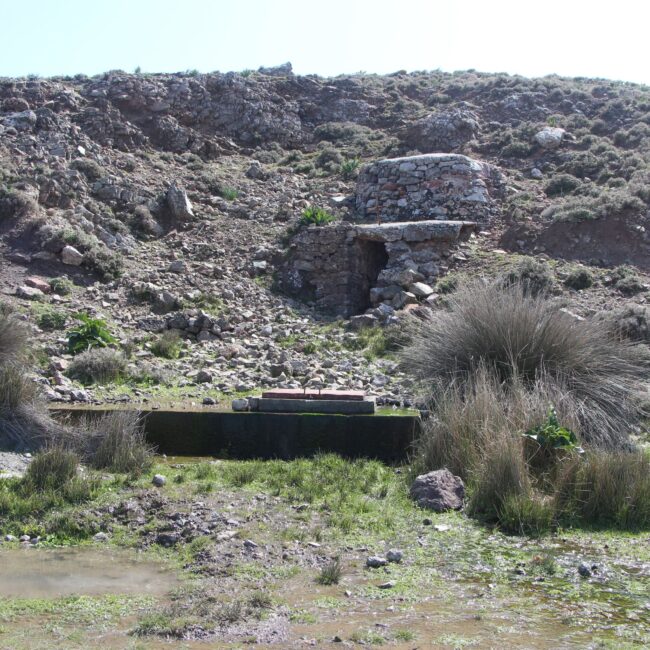The metallic water spring of Kokkinonero lies to the West of the Vourina Spring and south of the Soulas spring. The easiest way to access Kokkinonero is from the church of Osia Melou, 150 meters from the spring. Plane trees surround the area and the view is splendid.
Kokkinonero is a metal spring, with abundant curative iron water. It has taken its name (kokkino=red, nero=water) from its reddish metal nuggets. The carbonic acid iron water is suitable for mineral water therapy, and is recommended both for the invigoration of the muscular system of the intestinal tube and the facilitation of food digestion, while it also cures adenopathy, especially in little children.
There are written sources from the beginning of the 20th century, indicating that Its curative effects were known by the Koans, who used to organise visits to drink the water from the source, from May to August, or bottle the water for the inhabitants of Kos. Before the Asklepieion was discovered, archaeologists in the 19th century believed that it was located at Kokkinonero, due to its location close to the Vourina spring.
Signs of old buildings and clay pipes have been found that are probably ruins of an aqueduct that channeled water from Kokkinonero to the Asklepieion. Remnants of a cistern of another spring with the same ingredients lie 110 meters above the source of Kokkinonero.
The area around Kokkinonero is covered with limestones, while the wider region has volcanic rocks. The spring is classified as acid hydrocarbonate, at a temperature of 22 degrees celsius, and with a radioactivity level of 1 Mache.
A recent water analysis of the source gave the following findings, in NG/ML: Fe: 1220, Ni: 0,67, Cu: 0,93, Ag: 1,9, Zn: 0,52, Cd: 0,20, Β: 1,35, S: 320, Mn: 2,5, Al: 26, Si: 280, Pb: 2,2, P: 1,54, As: 0,64, Na: 4, Ti: 2, Mg: 17, Ca: 82, Sr: 0,20, V: 0,81, Cr: 0,81.
Lastly, a monument has been erected in the area, in memory of three Greek resistants (Theokritos Kostoglou, Venezuela Patakou and Stamatia Peri) who were captured in Kokkinonero by the Germans on April 16th, 1945. They were executed at the square of the Hippocrates plane tree.

















